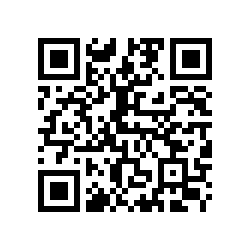E-WOM Referral: A New Factor to Influence Your Customer To Purchase
(1) Bina Nusantara University, Jakarta, Indonesia
(2) Bina Nusantara University, Jakarta, Indonesia
(*) Corresponding Author
Abstract
Full Text:
PDFReferences
R. T. Sari and P. E. Wirawan, “Analysis on Promotion and the Influence of Social Media in Restaurant Industry, Ubud, Bali, Indonesia,” J. Bus. Hosp. Tour., vol. 3, no. 1, p. 80, 2017, doi: 10.22334/jbhost.v3i1.93.
M. H. A. Bakar, M. A. M. Desa, and M. Mustafa, “Attributes for Image Content that Attract Consumers’ Attention to Advertisements,” Procedia - Soc. Behav. Sci., vol. 195, pp. 309–314, 2015, doi: 10.1016/j.sbspro.2015.06.349.
P. Schmitt, B. Skiera, and C. Van Den Bulte, “Referral programs and customer value,” J. Mark., vol. 75, no. 1, pp. 46–59, 2011, doi: 10.1509/jmkg.75.1.46.
A. M. Abubakar, M. Ilkan, and P. Sahin, “Marketing Intelligence & Planning Article information :,” Mark. Intell. Plan., vol. 34, no. 5, pp. 692–710, 2016.
R. A. Westbrook, “Product/Consumption-Based Affective Responses and Postpurchase Processes,” J. Mark. Res., vol. 24, no. 3, pp. 258–270, 1987, doi: 10.1177/002224378702400302.
S. W. Litvin, R. E. Goldsmith, and B. Pan, “Electronic word-of-mouth in hospitality and tourism management,” vol. 29, pp. 458–468, 2008, doi: 10.1016/j.tourman.2007.05.011.
A. Sernovitz, Word of mouth marketing : how smart companies get people talking. 2012.
F. A. Buttle, “Word of mouth: Understanding and managing referral marketing,” J. Strateg. Mark., vol. 6, no. 3, pp. 241–254, 1998, doi: 10.1080/096525498346658.
D. Lacitignola, “Handling hysteresis in a referral marketing campaign with self-information. Hints from epidemics,” Mathematics, vol. 9, no. 6, 2021, doi: 10.3390/math9060680.
S. Negash, T. Ryan, and M. Igbaria, “Quality and effectiveness in Web-based customer support systems,” Inf. Manag., vol. 40, no. 8, pp. 757–768, 2003, doi: 10.1016/S0378-7206(02)00101-5.
R. Taylor, Value-added processes in information systems. 1986.
C. I. Hovland and W. Weiss, “The influence of source credibility on communication effectiveness,” Public Opin. Q., 1951, doi: 10.1086/266350.
M. W. Riley, C. I. Hovland, I. L. Janis, and H. H. Kelley, “Communication and Persuasion: Psychological Studies of Opinion Change.,” Am. Sociol. Rev., 1954, doi: 10.2307/2087772.
W. J. McGuire, “The nature of attitudes and attitude change,” in Handbook of Social Psychology: The Individual in a Social Context (Vol. 3), 1969.
J. C. McCroskey, “Scales for the measurement of ethos,” Speech Monogr., 1966, doi: 10.1080/03637756609375482.
K. Giffin, “The Contribution Of Studies Of Source Credibility To A Theory Of Interpersonal Trust In The Communication Process,” Psychol. Bull., 1967, doi: 10.1037/h0024833.
D. a Aaker, “Managing Brand Equity,” J. Mark., 1991.
A. Dabbous and K. A. Barakat, “Bridging the online offline gap: Assessing the impact of brands’ social network content quality on brand awareness and purchase intention,” J. Retail. Consum. Serv., vol. 53, no. October 2019, p. 101966, 2020, doi: 10.1016/j.jretconser.2019.101966.
P. Kotler and K. L. Keller, Marketing Management, 14th ed. 2012.
S. W. Sussman and W. S. Siegal, “Informational influence in organizations: An integrated approach to knowledge adoption,” Inf. Syst. Res., vol. 14, no. 1, pp. 47–65, 2003, doi: 10.1287/isre.14.1.47.14767.
M. Fishbein and I. Ajzen, “Belief, Attitude, Intention and Behavior: An Introduction to Theory and Research.,” Contemp. Sociol., vol. 6, no. 2, p. 244, 1975, doi: 10.2307/2065853.
F. D. Davis, R. P. Bagozzi, and P. R. Warshaw, “User Acceptance of Computer Technology: A Comparison of Two Theoretical Models,” Manage. Sci., vol. 35, no. 8, pp. 982–1003, 1989, doi: 10.1287/mnsc.35.8.982.
J. Weismueller, P. Harrigan, S. Wang, and G. N. Soutar, “Influencer endorsements: How advertising disclosure and source credibility affect consumer purchase intention on social media,” Australas. Mark. J., vol. 28, no. 4, pp. 160–170, 2020, doi: 10.1016/j.ausmj.2020.03.002.
B. Zhang, B. Ritchie, J. Mair, and S. Driml, “Is the Airline Trustworthy? The Impact of Source Credibility on Voluntary Carbon Offsetting,” J. Travel Res., vol. 58, no. 5, pp. 715–731, 2019, doi: 10.1177/0047287518775781.
A. Spry, R. Pappu, and T. B. Cornwell, “Celebrity endorsement, brand credibility and brand equity,” Eur. J. Mark., vol. 45, no. 6, pp. 882–909, 2011, doi: 10.1108/03090561111119958.
S. Sivanandamoorthy, “Impact of Celebrity Endorsement on Brand Equity,” Int. J. Manag. Inf. Technol., vol. 10, no. 3, pp. 1953–1960, 2013, doi: 10.24297/ijmit.v10i3.1659.
I. Wen, “An empirical study of an online travel purchase intention model,” J. Travel Tour. Mark., vol. 29, no. 1, pp. 18–39, 2012, doi: 10.1080/10548408.2012.638558.
M. G. Khwaja, S. Mahmood, and U. Zaman, “Examining the effects of ewom, trust inclination, and information adoption on purchase intentions in an accelerated digital marketing context,” Inf., vol. 11, no. 10, pp. 1–12, 2020, doi: 10.3390/info11100478.
Y. H. Fang, Beyond the credibility of electronic word of mouth: Exploring eWOM adoption on social networking sites from affective and curiosity perspectives, vol. 18, no. 3. 2014.
D. Kala and D. S. Chaubey, “The effect of eWOM communication on brand image and purchase intention towards lifestyle products in India,” Int. J. Serv. Econ. Manag., vol. 9, no. 2, pp. 143–157, 2018, doi: 10.1504/IJSEM.2018.096077.
W. T. Wang and H. M. Li, “Factors influencing mobile services adoption: A brand-equity perspective,” Internet Res., vol. 22, no. 2, pp. 142–179, 2012, doi: 10.1108/10662241211214548.
A. Ruiz-Gomez, “Digital Fame and Fortune in the age of Social Media: A Classification of social media influencers,” Adres. ESIC Int. J. Commun. Res., vol. 19, no. 19, pp. 08–29, 2019, doi: 10.7263/adresic-019-01.
F. Joseph, H. Jr, B. J. Babin, R. E. Anderson, and W. C. Black, on Multivariate Data Analysis . Hair Jr . William C . Black Seventh Edition. 2014.
C. M. K. Cheung, M. K. O. Lee, and N. Rabjohn, “The impact of electronic word-of-mouth: The adoption of online opinions in online customer communities,” Internet Res., vol. 18, no. 3, pp. 229–247, 2008, doi: 10.1108/10662240810883290.
C. Lin, Y.-S. Wu, and J.-C. V. Chen, “Electronic Word-of-Mouth: The Moderating Roles of Product Involvement and Brand Image,” Proc. 2013 Int. Conf. Technol. Innov. Ind. Manag., pp. 29–47, 2013.
DOI: https://doi.org/10.30645/kesatria.v4i2.159
DOI (PDF): https://doi.org/10.30645/kesatria.v4i2.159.g158
Refbacks
- There are currently no refbacks.
Published Papers Indexed/Abstracted By:














